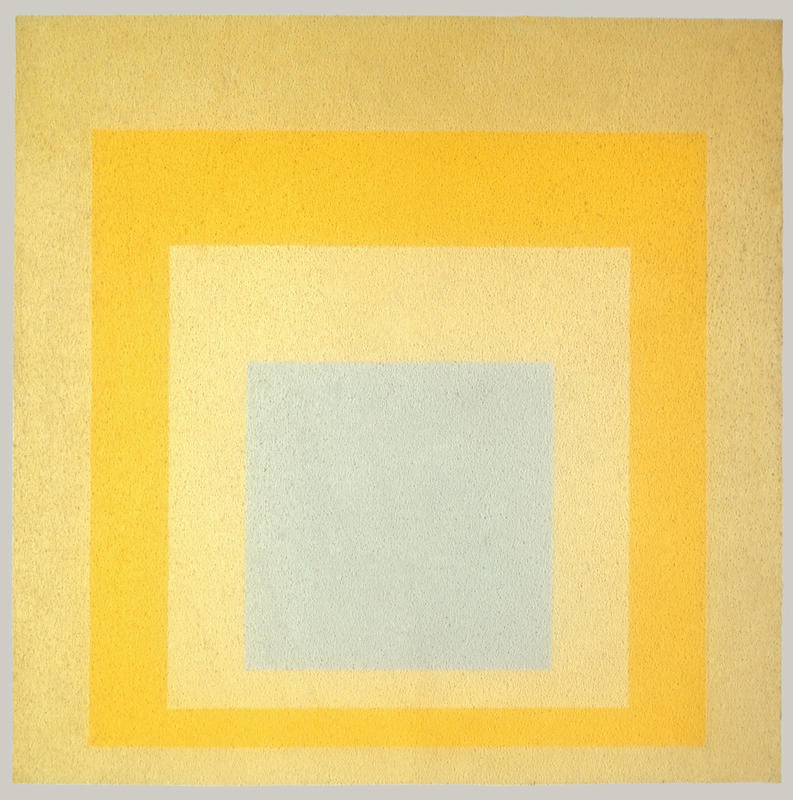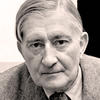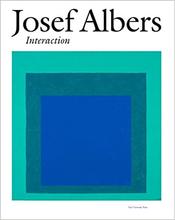More about Homage to the Square: With Rays
- All
- Info
- Shop

Contributor
Albers did over one thousand square color studies in the form of paintings, drawings, prints, and tapestries over 25 years. OVER ONE THOUSAND.
In this one, we see a muted grey square hovering over a bright background. The “With Rays” part of the title might allude to the sun-like progression of radiating tones of yellow. Take a moment to notice how you look at this image. The subtle changes in tones of color help the viewer’s eyes to move outward. And, these yellow gradients might also give you an illusion of depth and space, making Alber’s squares predecessors to the dizzying op art that would reach popularity in the mid-60s. Little aha! moments in visual perception are what drove Albers’s magical experiments in color theory.
Albers thought of colors as his little personified pals. “Color, in my opinion, behaves like a man,” he said, “in two distinct ways--first in self realization and then in the realization of relationships with others. In my paintings I have tried to make the two polarities meet--independence and interdependence.” The parallels that he often drew between the relationships of colors and those of humans are one reason why he reached such fame as a teacher.
But for all the touchy-feely stuff, Albers was still rather clinical in his studies of color (the “over one thousand” part might have tipped you off). He mused somewhat coherently in one interview that “the head is still yet above the eyes. That encourages me to make good use of it. My intestines below my heart and stomach interest me less. Clear thinking and seeing won’t spoil emotions; just gets them in the right place. Ratio is in. … angst is out.” Or, brains over guts = intelligent art.
Sources
- Henry Geldzahler, “American Painting in the Twentieth Century.” (Metropolitan Museum of Art, 1965.) 150.
- “Homage to the Square: With Rays (1959).” Pratt Institute. Accessed January 1st, 2017. https://www.pratt.edu/the-work/gallery/homage-to-the-square-with-rays-1…
- “Homage to the Square: With Rays,” Metropolitan Museum of Art. Accessed January 1st, 2017. http://www.metmuseum.org/toah/works-of-art/59.160/
- Shawn Roggencamp, “Albers, Homage to the Square,” Khan Academy. Accessed January 2nd, 2017. https://www.khanacademy.org/humanities/art-1010/abstract-exp-nyschool/n…
- Thomas Micchelli, “The Square in the Raw: Josef Albers’ Unguarded Moments.” Hyperallergic. April 25th, 2012. Accessed January 1st, 2017. http://hyperallergic.com/55894/the-square-in-the-raw-josef-albers-ungua…












